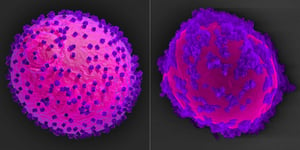Solar nano-panels added to the surface of yeast, so that these single-cell microorganisms are more efficient at synthesizing the substances then used by the pharmaceutical industries to produce drugs: it seems strange, but researchers from the Wyss Institute for Biologically Inspired Engineering at Harvard (Boston) have managed to do so, as reported in the journal Science.
How do these microscopic “panels” (measuring only billionths of a meter) work? Using highly sophisticated techniques, the US researchers applied them to normal beer yeast – saccharomyces cerevisiae – in order to make it more efficient, in particular, in the synthesis of shikimic acid (a substance that yeast produces naturally, and is used to make an influenza drug). The production of this acid was enhanced by modifying the metabolism of the yeast, in such a way as to use all its available carbon, starting with glucose (in unmodified yeast, on the other hand, a part of this substance takes different metabolic pathways and in the end is used as a source of energy). In order to recover the energy removed following this new carbon “cycle”, the researchers stuck “panels” made up of nano-particles of indium phosphide (a semi-conductor metal sensitive to light) on the external surface of the yeast. When it is hit by light, the indium phosphide collects electrons (energy) from the light and delivers them to the yeast cells. The researchers used an organic substance, based on polyphenols (the anti-oxidant compounds that are found for example in fruit and are completely harmless) as the “glue” to stick the nano-particles to the yeast.
The final result of these transformations was an 11-fold increase in the production of shikimic acid compared to the amount obtained from yeast without solar nano-panels.
This study has been welcomed with considerable interest, because it represents an important step towards the production of so-called bio-hybrid materials: i.e. materials in which organic and non-organic substances are joined, resulting in completely new and potentially very useful species. Of course, all of this raises ethical issues that need to be addressed with increasing attention.

